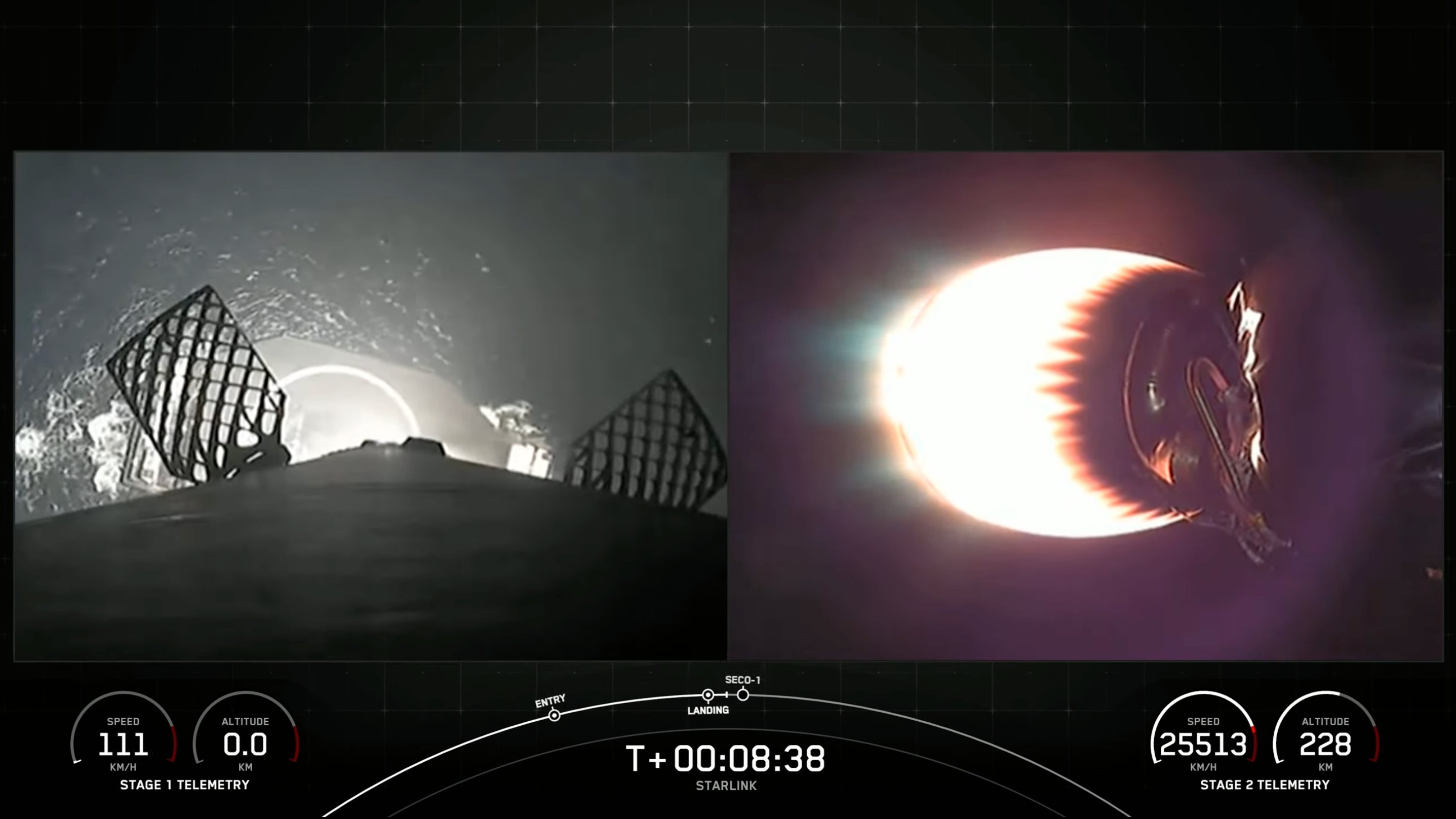SpaceX launched another big batch of its Starlink internet satellites early Thursday morning (June 22) and landed the returning rocket on a ship at sea.
A Falcon 9 rocket carrying 47 Starlink spacecraft lifted off from California's Vandenberg Space Force Base on Thursday at 3:19 a.m. EDT (0719 GMT; 12:19 a.m. local time)
The Falcon 9's first stage returned to Earth as planned about eight minutes and 45 seconds after launch. It performed a pinpoint touchdown on the SpaceX droneship Of Course I Still Love You, which was stationed in the Pacific Ocean.
Related: Starlink satellite train: How to see and track it in the night sky

It was the third launch and landing for this particular booster, SpaceX wrote in a mission description.
The Falcon 9's upper stage, meanwhile, continued carrying the 47 Starlink satellites aloft, with the goal of deploying them in low Earth orbit about 19 minutes after liftoff.
SpaceX has now launched more than 4,600 Starlink satellites, the vast majority of which are currently operational, according to astrophysicist and satellite tracker Jonathan McDowell.
Get the Space.com Newsletter
Breaking space news, the latest updates on rocket launches, skywatching events and more!
And the broadband megaconstellation will continue to grow far into the future. SpaceX has permission to deploy 12,000 Starlink satellites, and the company has applied for approval to launch another 30,000 spacecraft on top of that.
Thursday's Starlink mission was the first part of an early-morning spaceflight doubleheader, if all goes according to plan: A United Launch Alliance (ULA) Delta IV Heavy rocket is scheduled to launch a classified satellite for the U.S. National Reconnaissance Office from Florida's Cape Canaveral Space Force Station at 5:18 a.m. EDT (0918 GMT).
You can watch the Delta IV Heavy liftoff here at Space.com, courtesy of ULA.
Editor's note: This story was updated at 3:42 a.m. ET on June 22 with news of successful launch and rocket landing.
Join our Space Forums to keep talking space on the latest missions, night sky and more! And if you have a news tip, correction or comment, let us know at: community@space.com.

Michael Wall is a Senior Space Writer with Space.com and joined the team in 2010. He primarily covers exoplanets, spaceflight and military space, but has been known to dabble in the space art beat. His book about the search for alien life, "Out There," was published on Nov. 13, 2018. Before becoming a science writer, Michael worked as a herpetologist and wildlife biologist. He has a Ph.D. in evolutionary biology from the University of Sydney, Australia, a bachelor's degree from the University of Arizona, and a graduate certificate in science writing from the University of California, Santa Cruz. To find out what his latest project is, you can follow Michael on Twitter.









